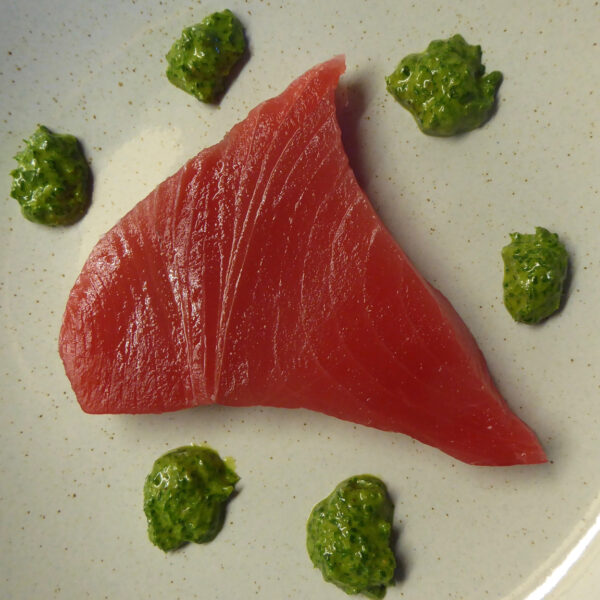World Tuna Day
Earlier this year staff at a restaurant in Ginza Tokyo posed with a 208kg Bluefin tuna that had been bought at auction for nearly £150,000. By comparison, the biggest tuna ever caught was in 1979 by fisherman Ken Fraser off Nova Scotia. It weighed in at 679kg — the same weight as a Mini, and it was 3.75 metres long – that’s a hell of a lot of sushi.
Tuna is the most eaten fish in the world. It is a member of the mackerel family and there are eight main types: Bluefin, Yellowfin, Skipjack, Albacore, Bonito, Longtail, Blackfin and Bigeye. The Skipjack is the most plentiful of the species, and it is mostly what you will find in cans and in between two slices of bread in the supermarket. It is named for its habit of leaping out of the water as it swims. Tuna can swim at over 40mph so it’s not something you want on the end of your line if you’re in a small boat.
Part of tuna’s popularity is its versatility; it can be eaten raw, cooked, or canned and is a favourite in Japan for making sushi and sashimi. In the West we know it better as a canned product, but it is now catching on as a fresh option from the supermarket counter and looks like a cut of beef — dark red and fatless.
Like other oily fish such as mackerel, herring, and salmon it has a distinct and different flavour to non-oily white fish and is rich in Omega 3 fatty acids. As with most oily fish it will also stand up to any strong flavours you care to put with it; think garlic, ginger, lime, coriander, chilli. Another thing worth bearing in mind is that like steak, it is best served slightly underdone thus preserving its juiciness, otherwise you might just as well buy a can.
The Japanese take all things fishy. Sushi and sashimi means serving it raw, and the preparation is considered an art form. There are schools specialising in the making of it, and you can spend several thousand pounds on a specialist knife made from Honyaki steel.
Of course, we cannot talk about any fish these days without the word ‘sustainability’ cropping up, and tuna is a case in point. Catches of tuna worldwide have increased by one thousand per cent in the last sixty years, which today brings in six million tonnes a year driven on one hand by industrial fishing and the other by increased demand. Stocks are reckoned to be a quarter of what they were in the 50’s.
Part of this demand is down to more people in the West acquiring a taste for sushi, which means undersized tuna, caught in the Mediterranean, are caged and fed on other wild fish to increase their size and fat content.
But it is still possible to enjoy tuna with a clear conscience. The Marine Stewardship Council (msc.org) certifies fisheries that only deal with fish caught using sustainable methods, such as rod and line caught fish. This certification can be checked when purchasing tuna or other wild fish.
Many things are being done to right the damage that humans have made to the planet and the wildlife it supports. Like the ban on herring fishing which allowed stocks to increase, with some fisheries seeding coastal waters with lobster fry that have been part raised in tanks.
For all those who consider only profits and not the future there are those that care enough to be responsible and do something positive.
For a sensational way of eating fresh tuna you will first need to make a Salsa Verde. Take a small bunch each of fresh basil and parsley and put them in a food processor (or use a stick blender) with a tablespoon of rinsed capers, a teaspoon of Dijon mustard and some black pepper. Blitz to a purée whilst adding two tablespoons of olive oil – more if it looks on the dry side.
Season your tuna steaks on both sides and pan fry to how you like them done; they don’t have to be too underdone but on the pink side is recommended. Serve on a bed of wilted spinach with some wedged potatoes fried golden in olive oil and the Salsa Verde on the side. An alternative steak and chips perfect, for celebrating world tuna day on 2nd May.
Written & photographed by chef & author, Ian Dowding

